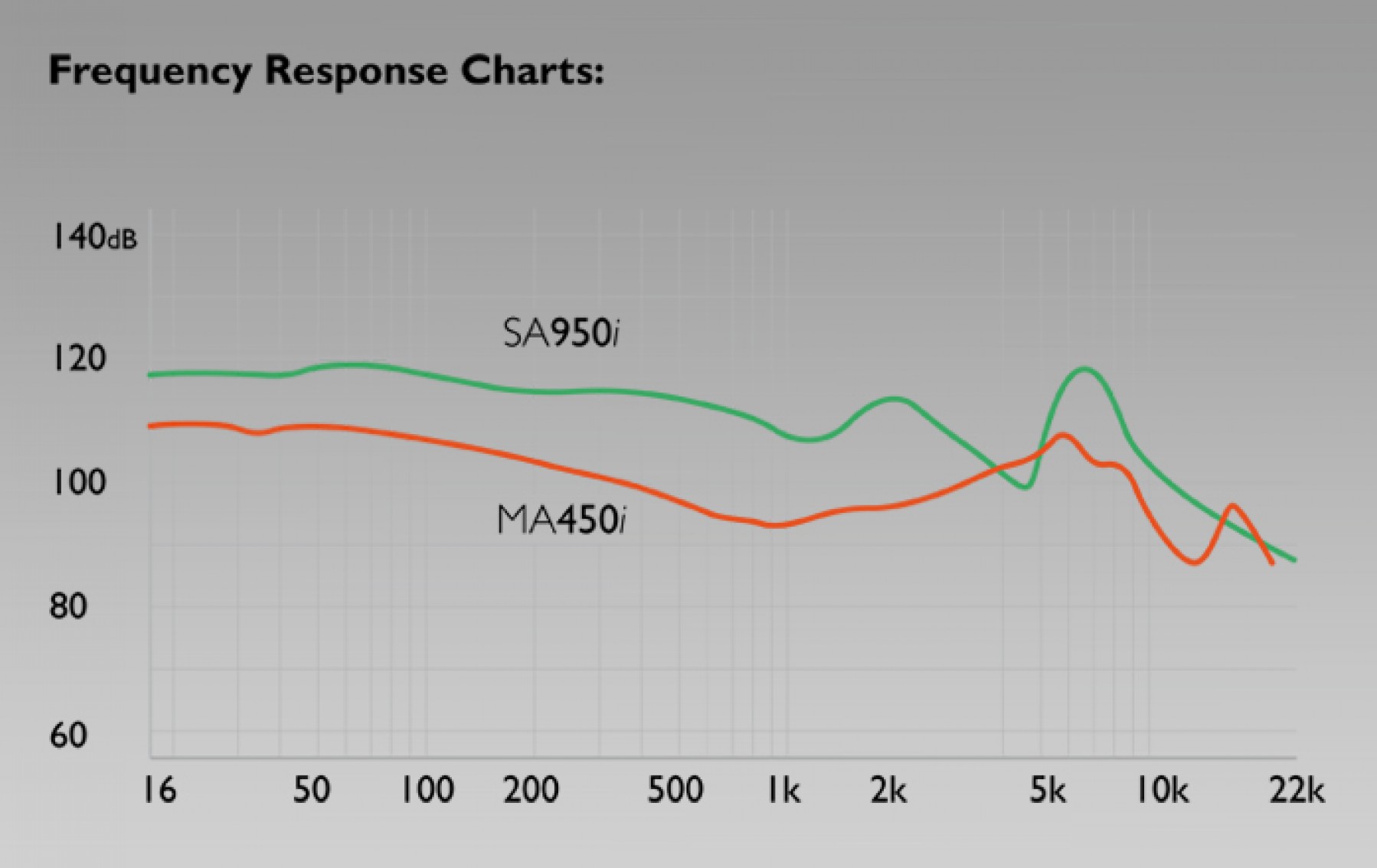In audio equipment, the frequency response describes the range of frequencies, audio tones, that a product can produce. Every sound produced, in music or otherwise, has a frequency. Be it the low droning noise of an airplane engine, the high pitched sound of an ambulance rushing by, or the vocals on your favourite track. Frequency is measured in Hertz, and all sounds have a frequency, from deep bass tones with low cycles per second through to the highest trebles. The human hearing range of frequencies is around 20-20,000Hz, and in theory humans should be able to hear any sound within this frequency range, but it’s not always the case. Age, hearing damage and a number of other factors mean that detecting all frequencies within the boundaries of the hearing range is not possible for some people.
In audio equipment, the frequency response describes the ability of a product to reproduce sound of different frequencies. For example, RHA’s audio products produce frequency ranges between 16Hz-22kHz, meaning that they are able to produce the full spectrum of frequency responses which humans are able to detect.
It’s useful to understand the principles of frequency response. With a little knowledge it can be easier to compare and determine which products are more suited to your needs. If, for example, you pick up a headphone with a frequency response of 30Hz-22kHz, and another that has a response of 16Hz-16kHz, you can make an educated guess that the latter will be the more bass-focused headphone, which might suit your music tastes. Whilst there is every possibility this isn’t actually the case, this at least gives a better understanding of the capabilities of the audio product in question.
Frequency response is not an exact science, and it is only one of many factors which can influence sound quality of audio products. Being able to reproduce the frequencies of audio is good for sound reproduction, but it is the ability to produce each frequency at the same volume which impacts the quality of the audio, something we’ll be discussing in our next RHA Blog entry, so keep an eye on the RHA Facebook and Twitter for the next entry.
UPDATE: Understanding Frequency Response II is available on the RHA blog.
